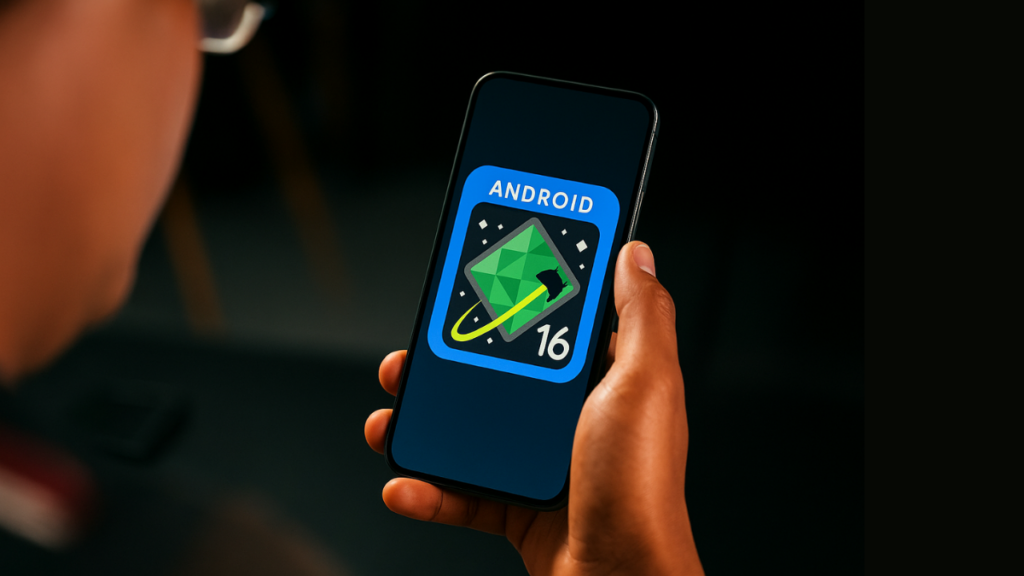Android 15 may still be on the horizon for many Android users, but Google is already well into the development of Android 16. The new operating system has reached its platform stability phase, indicating that the final release is approaching.
So far, Google has rolled out two developer previews of Android 16, followed by a couple of beta versions. These beta releases have provided us with a sneak peek at what to expect from the upcoming OS before it becomes available to the public. Here’s everything we know about Android 16, including its release date, compatible devices, and new features.
Android 16 Release Date
Google has announced that Android 16 is set to launch in the second quarter of 2025. Sameer Samat, the President of the Android Ecosystem, confirmed to Android Police that everything is progressing as planned. This suggests that we can expect the official release by June 2025, although there are speculations about a potential earlier launch in May.
If this timeline holds, Android 16 will be the earliest version released in recent years. Typically, Google unveils the latest Android version in August or later, but this time, Android 16 is expected to debut at least a month ahead of schedule.

Additionally, Google has confirmed that a minor update will follow in the fourth quarter of 2025, though it remains uncertain whether it will be designated as Android 16.1 or something different.

Android 16 Compatible Phones
As of now, Android 16 beta is available for some Pixel and non-Pixel devices. Here’s the full list:
- Pixel 9
- Pixel 9 Pro
- Pixel 9 Pro XL
- Pixel 9 Pro Fold
- Pixel 8
- Pixel 8 Pro
- Pixel 8a
- Pixel 7
- Pixel 7 Pro
- Pixel 7a
- Pixel 6
- Pixel 6 Pro
- Pixel 6a
- Pixel Fold
- Pixel Tablet
- Xiaomi 15
- Xiaomi 14T Pro
- OnePlus 13
If you own one of the compatible phones or tablets, you can experience Android 16 right now by installing the beta version. Just keep in mind that beta versions often come with bugs and incomplete features.
While the list of compatible devices is currently limited, the stable version will eventually be available for a wide range of Android devices. We will keep our website updated as manufacturers release their official Android 16 upgrade lists.
Android 16 New Features
1. Progress-centric notifications
Android 16 introduces a new class of notifications that lets users monitor and access important ongoing activities, such as ridesharing, delivery, and navigation. This is similar to iOS’s Live Activities with some differences. For example, Google displays progress-centric notifications more prominently on the lock screen as they are treated with high-priority.
The progress-centric notifications (also known as Live Updates) also work with a status bar and always-on display. As revealed by Android Authority, it is displayed as a chip in the status bar, and for that period, all other notifications are hidden. Tapping on that reveals the full information in a pop-up window.
2. Improved photo picker
Photo picker has been a great privacy addition to Android, allowing users to give access to specific photos and videos rather than the entire library. This is getting even better with Android 16, as the new OS will allow searching from cloud media providers in the Android photo picker itself.
Google has also added new APIs that allows apps to embed photo picker directly into their view hierarchy. This would make media selection seamless and it’ll feel like a native part of the app’s interface rather than a separate overlay.
3. Predictive back improvements
This feature provides users with a preview of the screen they will return to before the back navigation is completed. Android 16 brings predictive back support to three-button navigation. Long-pressing the back button will show a preview of the previous screen.
4. Better support for adaptive refresh rate
This feature enables the display refresh rate on supported devices to adapt to the content frame. This reduces the power consumption while also eliminating the need to manually switch the refresh rate. The adaptive refresh rate was introduced in Android 15, but Android 16 makes it easier for developers to take advantage of it.
5. Richer haptics
With Android 16, Google is giving app developers more control over haptics on Android devices. New haptic APIs let apps define the amplitude and frequency curves of a haptic effect.
Richer haptics would make gaming more engaging with dynamic vibrations for actions such as explosions, collisions, or gunfire. Smartphone brands can also use it to assign distinct vibration patterns for different types of notifications (e.g., messages, calls, alarms, reminders), making it easier for users to identify alerts without looking at their device.
6. Camera improvements
Android 16 adds new hybrid auto-exposure models that will allow you to manually control specific aspects of exposure while letting the auto-exposure algorithm handle the rest. This provides greatly flexibility compared to the current approach where you either have full manual control or rely entirely on auto-exposure.
The new OS also brings camera support for fine color temperature and tint adjustments to better support professional video recording applications. Below are some examples showing how a photo would look after applying different color temperature and time adjustments.[image]
With the camera night mode scene detection, third-party apps can detect low-light scenes better and switch to night mode to capture better photos provided that your device supports night mode.
Android 16 also expands HDR capabilities with the added support for UltraHDR images in the HEIC file format. Google is also working on AVIF support for UltraHDR, which could come in the stable build.
7. Advanced Professional Video
Android 16 introduces Advanced Professional Video (APV) codec which is designed to be used for professional level high quality video recording and post production.
Google mentions that the APV codes have the following features:
- Perceptually lossless video quality (close to raw video quality)
- Low complexity and high throughput intra-frame-only coding (without pixel domain prediction) to better support editing workflows
- Support for high bit-rate range up to a few Gbps for 2K, 4K, and 8K resolution content, enabled by a lightweight entropy coding scheme
- Frame tiling for immersive content and for enabling parallel encoding and decoding
- Support for various chroma sampling formats and bit depths
- Support for multiple decoding and re-encoding without severe visual quality degradation
- Support multi-view video and auxiliary video like depth, alpha, and preview
- Support for HDR10/10+ and user-defined metadata
8. Health Connect updates
Google is updating Health Connect with a new data type, defined according to the World Health Organization (WHO) guidelines for moderate and vigorous activity. Each record requires the start time, the end time, and whether the activity intensity is moderate or vigorous.
9. Privacy Sandbox improvements
Android 16 incorporates the latest version of Privacy Sandbox on Android, creating an enhanced privacy-focused ecosystem for mobile advertising and measurements. The goal is to protect user privacy by reducing invasive tracking methods, while still enabling businesses to serve relevant ads and measure the effectiveness.
For more daily updates, please visit our News Section.

